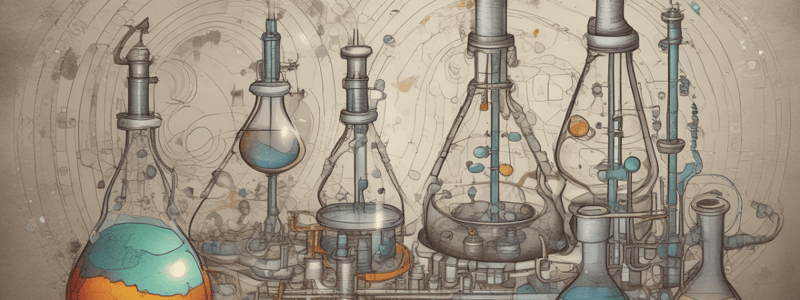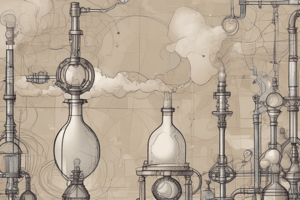Podcast
Questions and Answers
What is Diffusion?
What is Diffusion?
is the spontaneous spreading out of a substance due to the natural movement of the particles of that substance.
Under what conditions do the volumes of gases consumed and produced in a reaction bear a simple whole number ratio to each other?
Under what conditions do the volumes of gases consumed and produced in a reaction bear a simple whole number ratio to each other?
When the volumes are measured under the same conditions of temperature and pressure.
What is the relationship between the volume of a fixed mass of gas and its pressure, according to Boyle's Law?
What is the relationship between the volume of a fixed mass of gas and its pressure, according to Boyle's Law?
The volume of a fixed mass of gas is inversely proportional to the pressure of the gas.
What is the underlying assumption about the kinetic energy of particles in the Kinetic Theory of Gases?
What is the underlying assumption about the kinetic energy of particles in the Kinetic Theory of Gases?
What is the combined gas law, and what conditions must be met when using it?
What is the combined gas law, and what conditions must be met when using it?
According to Avogadro's Law, what is the relationship between equal volumes of gases and the number of molecules they contain?
According to Avogadro's Law, what is the relationship between equal volumes of gases and the number of molecules they contain?
What is the underlying assumption about the volumes of particles in the Kinetic Theory of Gases, and how does this assumption relate to the distances between them?
What is the underlying assumption about the volumes of particles in the Kinetic Theory of Gases, and how does this assumption relate to the distances between them?
How does the average kinetic energy of particles in the Kinetic Theory of Gases change with temperature, and what is the proportionality constant?
How does the average kinetic energy of particles in the Kinetic Theory of Gases change with temperature, and what is the proportionality constant?
What is the relationship between the pressure and volume of a gas at constant temperature, and what is the mathematical expression of this relationship?
What is the relationship between the pressure and volume of a gas at constant temperature, and what is the mathematical expression of this relationship?
What is the relationship between the volume of a gas and its temperature at constant pressure, and what is the mathematical expression of this relationship?
What is the relationship between the volume of a gas and its temperature at constant pressure, and what is the mathematical expression of this relationship?
Flashcards are hidden until you start studying




